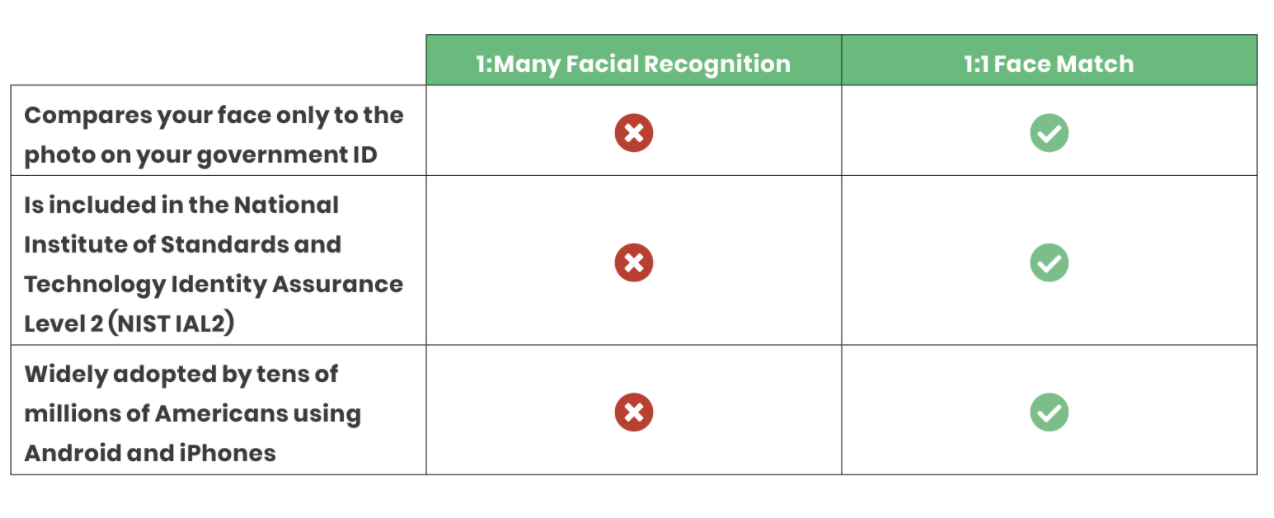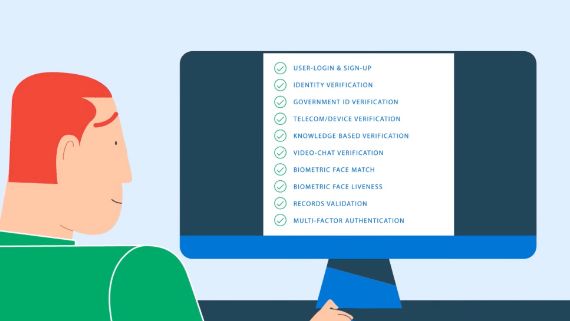As the COVID-19 pandemic hastened the transition to digital service delivery and the rapid at-scale adoption of evolving technologies, questions emerged about equitable access to government benefits and services. Two such technologies under scrutiny are facial recognition and face match for remote identity verification.
Facial recognition is a precise technical term used by organizations such as the National Institute of Standards and Technology (NIST). There are two distinct types of facial recognition: 1:many and 1:1, and they are frequently conflated. Media reports and even university studies often fail to distinguish between them correctly, leading to confusion among decision-makers and the general public. For ease of understanding, we refer to them as 1:many facial recognition and 1:1 face match.
Simply put, 1:1 face match is equivalent to an airport agent comparing your face to the photo on your government ID card. Conversely, 1:many facial recognition is equivalent to giving your picture to the same agent who is on stage at a rock concert, and asking the agent to pick your face out of the crowd. With millions of possible matches, the challenge of finding the right face increases measurably.

ID.me only uses 1:1 face match – not 1:many matching – to verify legitimate applicants. Our research and experience show that the most equity-enhancing remote identity verification combines best-in-breed 1:1 face match algorithms with human-in-the-loop relief valves. That research includes detailed testing by NIST, independent assessments of face-match vendors, and tests of our own orchestration platform. 1
Our research and experience have also found three key takeaways beyond the widespread failure to distinguish between facial recognition and face match:
- Leading Algorithms Perform More Equitably: The best facial-recognition algorithms perform more equitably across demographic groups for 1:1 face match, such as an application in which a user is attempting to verify identity.
- Human Reviewers and In-Person Verification Mitigate Potential Bias: Combining computer-based and human-driven face match is the key to achieving the best results, according to peer-reviewed scientific studies. Human reviewers and in-person verification serve as mitigating controls in the process, further driving down the margin of error and increasing equity and access.
- Artificial Intelligence and 1:1 Face Match Offer Significant Benefits: When implemented correctly, a hybrid approach combining artificial intelligence and 1:1 face match with humans in the loop offers advantages that go beyond initial verification. That approach can stop identity theft at scale, help government agencies process legitimate claims faster, deter fraud, recover accounts easier, and bring justice for those who have been exploited.
Access, equity, and inclusion should be the goals of any digital identity verification service. ID.me has been meticulous with research, planning, and product development to ensure our hybrid solution achieves those goals. We are fully committed to ensuring equitable access through our “No Identity Left Behind” initiative.
To learn more, read “Promoting Access, Equity, and Inclusion with AI and Digital Identity.”
Footnotes:
1. Clarification: ID.me verifies identity using 1:1 face match only. After an identity is verified, ID.me uses a specific 1:many check on selfies tied to government programs targeted by organized crime. That step is internal to ID.me and does not involve any external or government database. It occurs once during enrollment and exists to ensure a single attacker is not registering multiple identities. The 1:many step is not tied to identity verification




